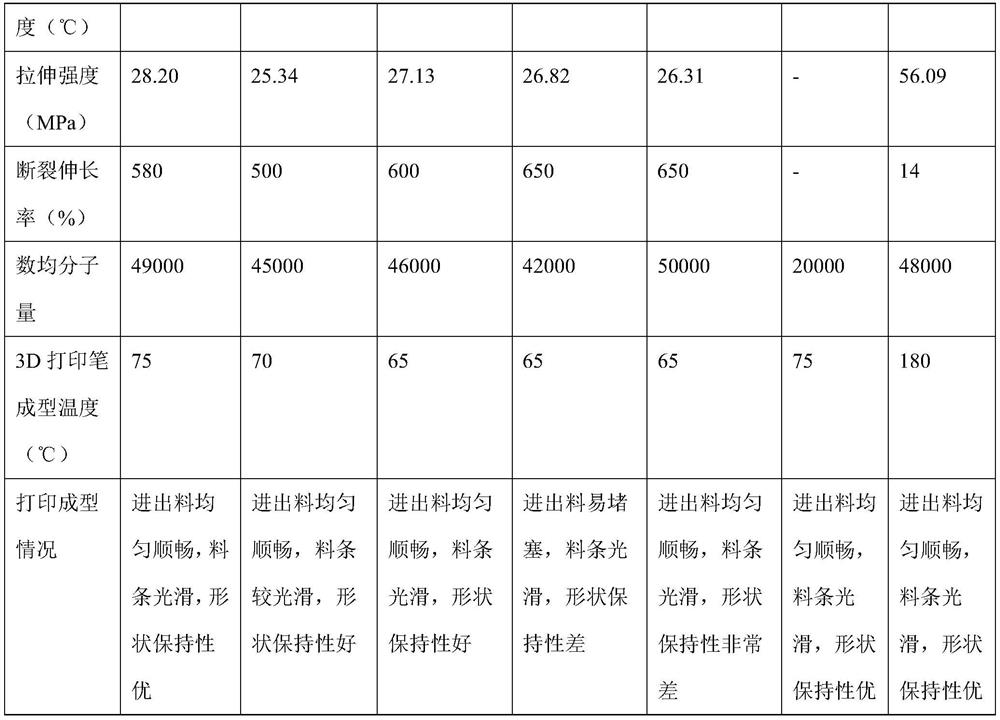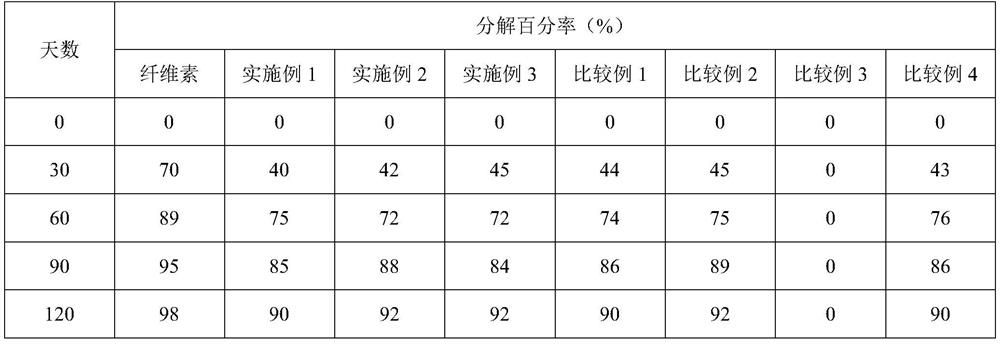Low-temperature 3D printing biodegradable material, preparation method and application thereof
A biodegradable material and 3D printing technology, which is applied in the field of low-temperature 3D printing biodegradable materials and their preparation, can solve the problems of 3D printing temperature up to 125°C, degradation performance impact, printing material flow, etc., to achieve low production cost and shape retention Good performance and smooth strip effect
- Summary
- Abstract
- Description
- Claims
- Application Information
AI Technical Summary
Problems solved by technology
Method used
Image
Examples
Embodiment 1
[0035] Add 9.3kg of dimethyl glutarate, 50g of glycolic acid, 6.2kg of 1,3-propanediol, and 20g of isopropyl titanate into the self-made reaction kettle, stir well, and react at a temperature of 180°C until there is no more water and Methanol is produced, add 200g of talcum powder, heat up to 200°C, and keep a vacuum of 5000-20pa to react until the current of the stirring motor rises to the maximum and the reaction ends, and white milky white resin particles are obtained.
[0036] Using a high-speed mixer, 3 kg of milky white resin and 9 g of oleic acid amide were evenly mixed, melted and blended and extruded by a co-rotating twin-screw extruder, and finally prepared by single-screw extrusion to prepare 3D printing filaments.
Embodiment 2
[0038] Add 9.3kg of dimethyl glutarate, 50g of glycolic acid, 6.2kg of 1,3-propanediol, and 20g of isopropyl titanate into the self-made reaction kettle, stir well, and react at a temperature of 180°C until there is no more water and Methanol is produced, add 200g of silicon dioxide, heat up to 200°C, and keep a vacuum of 5000-20pa to react until the current of the stirring motor rises to the maximum and the reaction ends, and white milky white resin particles are obtained.
[0039]Using a high-speed mixer, 3 kg of milky white resin and 9 g of oleic acid amide were evenly mixed, melted and blended and extruded by a co-rotating twin-screw extruder, and finally prepared by single-screw extrusion to prepare 3D printing filaments.
Embodiment 3
[0041] Add 7.6kg of suberic acid, 50g of glycolic acid, 6.3kg of 1,4-butanediol, and 20g of isopropyl titanate into the self-made reactor, stir well, and react at 200°C until no more water is produced in the system. Keep the reaction under the condition of vacuum degree of 5000-20pa, until the current of the stirring motor rises to the maximum and the reaction ends, and white resin particles are obtained.
[0042] Using a high-speed mixer, 3kg of white resin, 60g of sodium benzoate, and 9g of erucamide were evenly mixed, melted, blended and extruded by a co-rotating twin-screw extruder, and finally 3D printing wire was prepared by single-screw extrusion.
PUM
 Login to View More
Login to View More Abstract
Description
Claims
Application Information
 Login to View More
Login to View More - R&D
- Intellectual Property
- Life Sciences
- Materials
- Tech Scout
- Unparalleled Data Quality
- Higher Quality Content
- 60% Fewer Hallucinations
Browse by: Latest US Patents, China's latest patents, Technical Efficacy Thesaurus, Application Domain, Technology Topic, Popular Technical Reports.
© 2025 PatSnap. All rights reserved.Legal|Privacy policy|Modern Slavery Act Transparency Statement|Sitemap|About US| Contact US: help@patsnap.com



